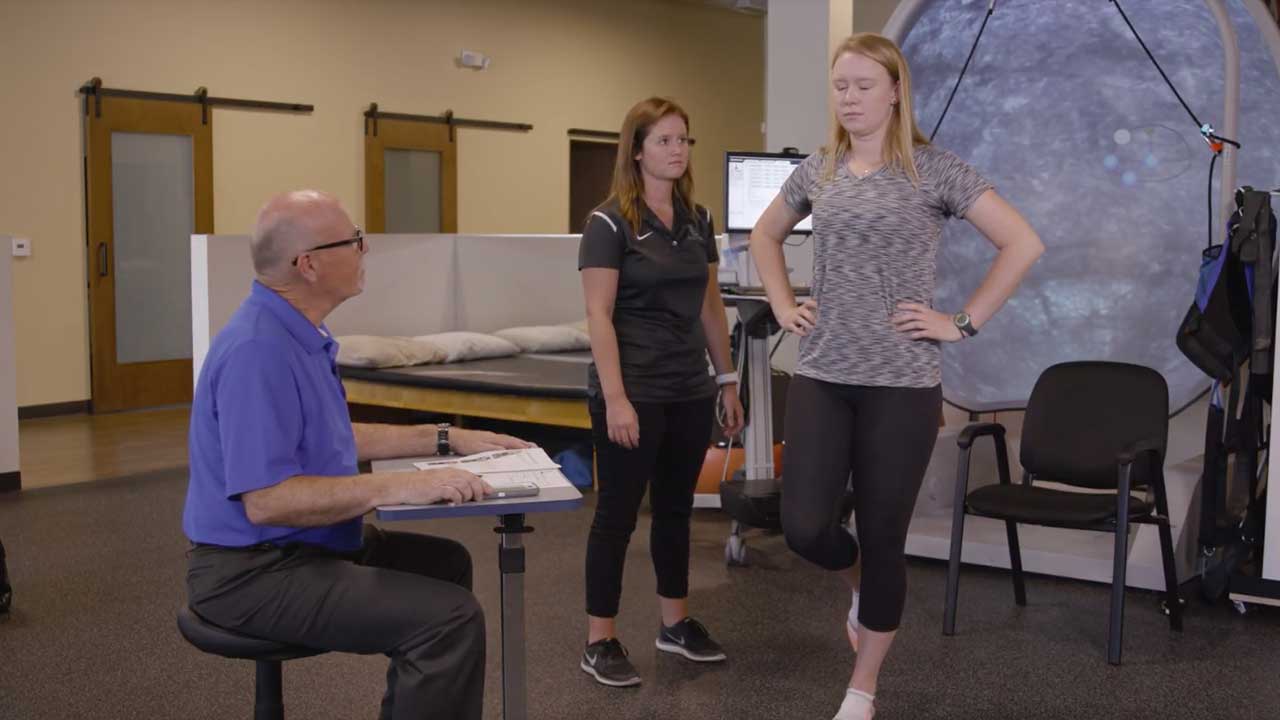BESS Test for Assessing Concussion
Balance Error Scoring System (BESS) reporting is a component of ImPACT Quick Test*.
*Annual Unlimited Use License

Use BESS as a quick and objective measure of balance after a concussion.
Balance issues are common, particularly in the period immediately after a concussion. Use BESS to aid your post-concussion evaluation and to help make treatment decisions.
What is the BESS test?
BESS was developed at the University of North Carolina, by researchers and clinicians in the sports medicine division. You can use this 10-minute test to check postural stability and control after a concussion to help make removal from activity decisions and to help measure recovery.
BESS Training
Once you complete ImPACT Quick Test you can continue your concussion evaluation by performing the BESS test. Because BESS uses a scoring system based on observed performance, results can be affected if your team does not score patients using the same criteria. It’s a good idea to provide BESS training that reviews the instructions, how to interpret observations, and how to verbally cue athletes.
Equipment/ materials for the BESS test
- Firm surface
- Foam pad
- Stopwatch
- Spotter
- BESS scoring sheet
What to be aware of during the test?
If you see a patient struggling on a firm surface take note right away. This could be a sign of a larger issue since this is the typical type of surface they will encounter. It is more common for patients to struggle while on a foam pad since the unstable surface makes balancing tasks more challenging.
Throughout the assessment, observe whether they are going through a lot of muscle contortions to stay in place. This can include flexing and extending their trunk so as not to move, rotating their hips, or lifting their legs which would all be considered scoring errors.
BESS performance scoring
When scoring the BESS balance test, an error is counted each time the patient deviates from the proper stance. An error is counted any time the patient does one of the following:
- Moves hands off the iliac crests
- Opens their eyes
- Steps, stumbles or falls
- Abducts or flexes the hip beyond 30 degrees
- Lifts the forefoot or heel off of the testing surface
- Remains out of the proper testing position for more than five seconds
The maximum total number of errors for any single condition is 10. If a patient commits multiple errors simultaneously, for instance, stumbles and opens their eyes, only one error is counted. Any score that exceeds 10 is something you should investigate further.
BESS balance assessment scoring sheet
With BESS being a component of ImPACT Quick Test, you will have access to the clinical report. This includes sections for you to review such as general patient information and their concussion assessment data. Under the BESS scores section, you can add scores for the double leg stance, single-leg stance, and tandem stance.
To see a complete walkthrough of the BESS balance test watch our video and print a copy of the scoring sheet to follow along.
Take our “ImPACT Quick Test Interpretation” 30-minute course with real-life case studies and learn how to compliment ImPACT Quick Test data with BESS and VOMS to help make reliable removal from activity decisions.